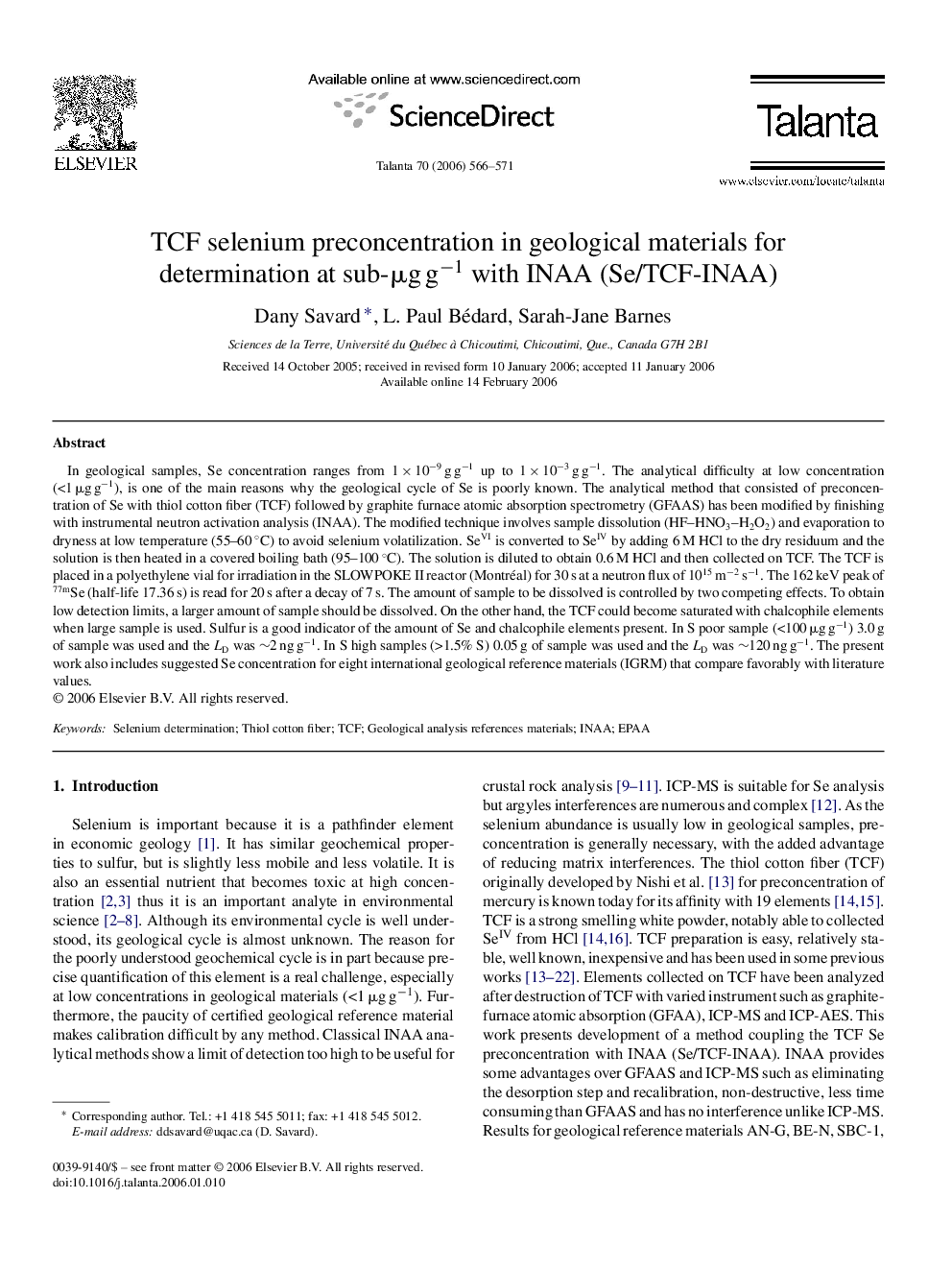| Article ID | Journal | Published Year | Pages | File Type |
|---|---|---|---|---|
| 1245490 | Talanta | 2006 | 6 Pages |
In geological samples, Se concentration ranges from 1 × 10−9 g g−1 up to 1 × 10−3 g g−1. The analytical difficulty at low concentration (<1 μg g−1), is one of the main reasons why the geological cycle of Se is poorly known. The analytical method that consisted of preconcentration of Se with thiol cotton fiber (TCF) followed by graphite furnace atomic absorption spectrometry (GFAAS) has been modified by finishing with instrumental neutron activation analysis (INAA). The modified technique involves sample dissolution (HF–HNO3–H2O2) and evaporation to dryness at low temperature (55–60 °C) to avoid selenium volatilization. SeVI is converted to SeIV by adding 6 M HCl to the dry residuum and the solution is then heated in a covered boiling bath (95–100 °C). The solution is diluted to obtain 0.6 M HCl and then collected on TCF. The TCF is placed in a polyethylene vial for irradiation in the SLOWPOKE II reactor (Montréal) for 30 s at a neutron flux of 1015 m−2 s−1. The 162 keV peak of 77mSe (half-life 17.36 s) is read for 20 s after a decay of 7 s. The amount of sample to be dissolved is controlled by two competing effects. To obtain low detection limits, a larger amount of sample should be dissolved. On the other hand, the TCF could become saturated with chalcophile elements when large sample is used. Sulfur is a good indicator of the amount of Se and chalcophile elements present. In S poor sample (<100 μg g−1) 3.0 g of sample was used and the LD was ∼2 ng g−1. In S high samples (>1.5% S) 0.05 g of sample was used and the LD was ∼120 ng g−1. The present work also includes suggested Se concentration for eight international geological reference materials (IGRM) that compare favorably with literature values.
